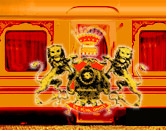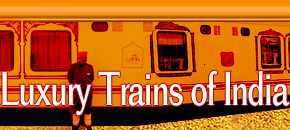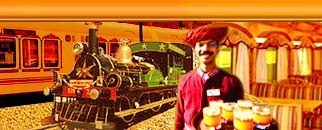Read about the Hill/toy trains of India. These hill trains run across many beautiful hill stations of India.
Home: Hill Trains in India
Hill Trains in India
Besides a vast network of Rails in the plains and plateaus, the Indian Railways also have some fascinating rail networks in the Hill regions of India. These hill trains of India connect many beautiful hill stations spread across the Himalayas and South India. Let's have a look at these hill trains (toy trains), running through the Himalayas and the Nilgiri Hills.
The Darjeeling Railway
The Darjeeling Himalayan Railway is one of the most fascinating and superb engineering feats of the world. The Darjeeling toy train/Sikkim toy train runs 83 kilometers between Siliguri and Darjeeling for about eight hours. The toy train runs on narrow gauge, only 0.6096 m but the journey is exhilarating.
The Kangra Valley Railway
The Kangra valley railway is yet another superb example of railway engineering. It is hard to believe how the railway engineers went about the whole project without destroying the grandeur of the mountain, and at the same time, revealing to the traveler, the enchanting beauty of the mountains.
Kalka Shimla Railway
Kalka/Shimla train, popularly called 'Toy Train', runs on one of the most fascinating landscapes. Meandering on these trains is a thrilling experience as one passes through the breathtaking landscapes of the majestic Himalayas, tunnels/ bridges and lush green valleys embroidered with pine and oak trees.
Nilgiri Mountain Railway
Nilgiri Mountain Railway is one of the steepest railway tracks one in Asia. The main feature of the Nilgiri mountain railway is the unique rack system and the equally unique and complicated locomotives.
Matheran Light Railway
The Matheran light railway has an interesting history. Abdul Hussain, son of business tycoon, Sir Adamjee Peerbhoy, started the construction of Matheran railway. The construction of Matheran light railway was started in 1904 and the two feet gauge line finally opened to traffic in 1907.
The Darjeeling Railway
The Darjeeling Himalayan Railway is one of the most fascinating and superb engineering feats of the world. The Darjeeling toy train/Sikkim toy train runs 83 kilometers between Siliguri and Darjeeling for about eight hours. The toy train runs on narrow gauge, only 0.6096 m but the journey is exhilarating.
The Kangra Valley Railway
The Kangra valley railway is yet another superb example of railway engineering. It is hard to believe how the railway engineers went about the whole project without destroying the grandeur of the mountain, and at the same time, revealing to the traveler, the enchanting beauty of the mountains.
Kalka Shimla Railway
Kalka/Shimla train, popularly called 'Toy Train', runs on one of the most fascinating landscapes. Meandering on these trains is a thrilling experience as one passes through the breathtaking landscapes of the majestic Himalayas, tunnels/ bridges and lush green valleys embroidered with pine and oak trees.
Nilgiri Mountain Railway
Nilgiri Mountain Railway is one of the steepest railway tracks one in Asia. The main feature of the Nilgiri mountain railway is the unique rack system and the equally unique and complicated locomotives.
Matheran Light Railway
The Matheran light railway has an interesting history. Abdul Hussain, son of business tycoon, Sir Adamjee Peerbhoy, started the construction of Matheran railway. The construction of Matheran light railway was started in 1904 and the two feet gauge line finally opened to traffic in 1907.





